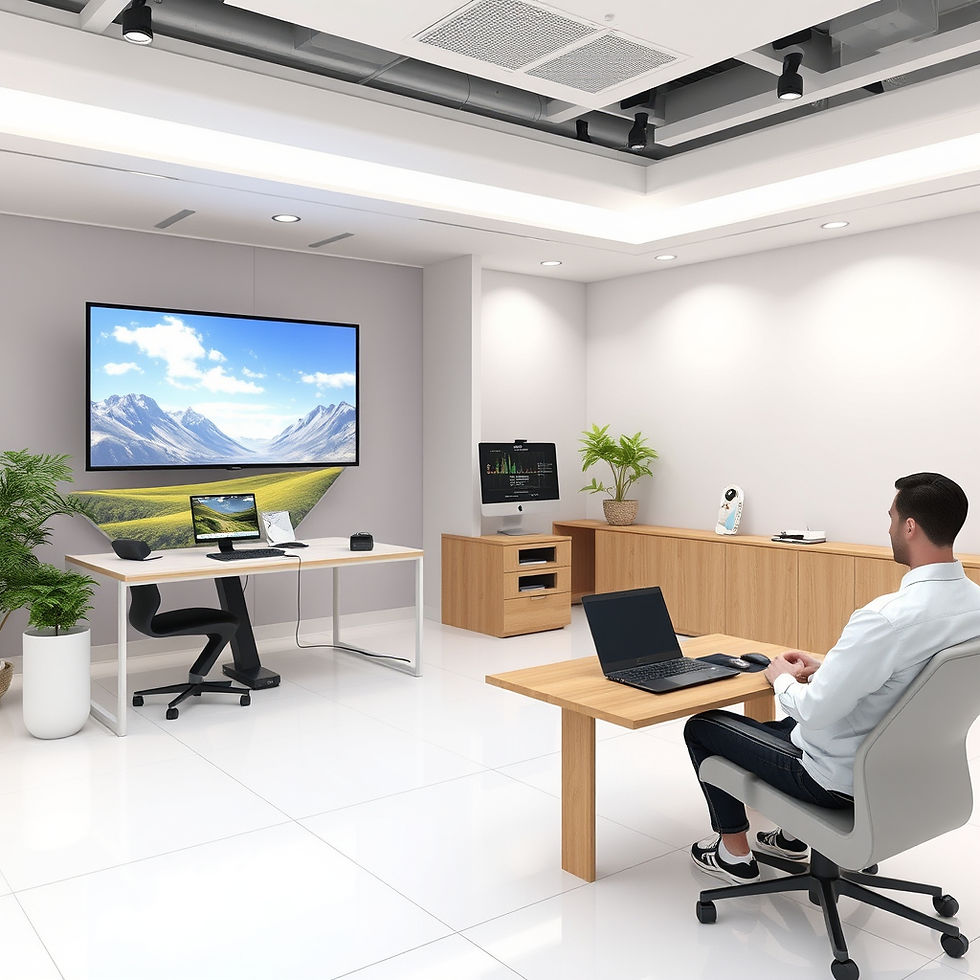What Is a Simulated Virtual Environment? A Beginner-Friendly Guide
- Geniuscrate

- Jul 18
- 2 min read

The term "simulated virtual environment" is becoming increasingly common, especially so in industries adopting digital training and planning tools. But what exactly does it mean, and why is it such a game-changer for learning, development, and operations?
This beginner-friendly guide will break down the core concepts behind simulated virtual environments (SVEs), how they work, and why they’re essential in today’s digital-first training landscape.
Definition: What Is a Simulated Virtual Environment (SVE)?
A simulated virtual environment is a fully or partially digital space created to replicate real-world settings, systems, or scenarios. Users can interact with this environment in real-time, often using VR headsets, desktop computers, or AR/MR devices.
Think of it as a sandbox version of reality, fully and perfectly tailored to your training, planning, or testing needs.
Key Characteristics of SVEs
Interactivity: Users can move, make decisions, manipulate objects, and interact with others in real-time.
Immersion: These environments use 3D modeling, physics simulations, and audio cues to create a sense of presence.
Safe Learning Spaces: SVEs allow for repetitive practice, fail-safe experimentation, and hazard-free operations.
Realism at Scale: From airports to emergency rooms, SVEs can simulate environments down to the smallest detail.
Why Simulated Virtual Environments Matter
For industries like defense, aerospace, healthcare, construction, and manufacturing, traditional training methods often fall short. SVEs offer a dynamic solution to key challenges:
Risk reduction in dangerous or high-stakes training
Cost savings by avoiding physical setups
Skill mastery through repeatable, measurable scenarios
Global accessibility for remote learners
In short, they unlock engaging, effective, and scalable training.
Real-World Examples of SVEs
Military Simulation: Troop movements and terrain navigation in a 3D-rendered battlefield.
Medical Training: Practicing surgery with lifelike virtual patients and instruments.
Aviation: Pilot training in simulated cockpits with real-time weather dynamics.
Construction Planning: Reviewing architectural blueprints within an interactive 3D environment.
How GeniusCrate Builds Simulated Virtual Environments
At GeniusCrate, we specialize in crafting bespoke 3D simulations tailored to your industry’s requirements. Our environments are not just beautiful, but they’re functional, immersive, and built for performance.
Using Blender, Maya, Unreal Engine, Unity, and Substance Painter, we deliver SVEs that simulate everything from large-scale terrains to high-fidelity technical procedures.
Whether you need to train 10 people or 10,000, our SVEs scale to your needs; all the while dramatically improving learning outcomes.
Conclusion: Virtual Environments Are the Future of Learning
If you're looking to modernize training, reduce operational risk, or scale employee onboarding, simulated virtual environments are the most flexible, immersive solution available today.
Want to bring your own environment to life?
Talk to GeniusCrate, and we’ll help you design a virtual world that delivers real-world results.



Comments